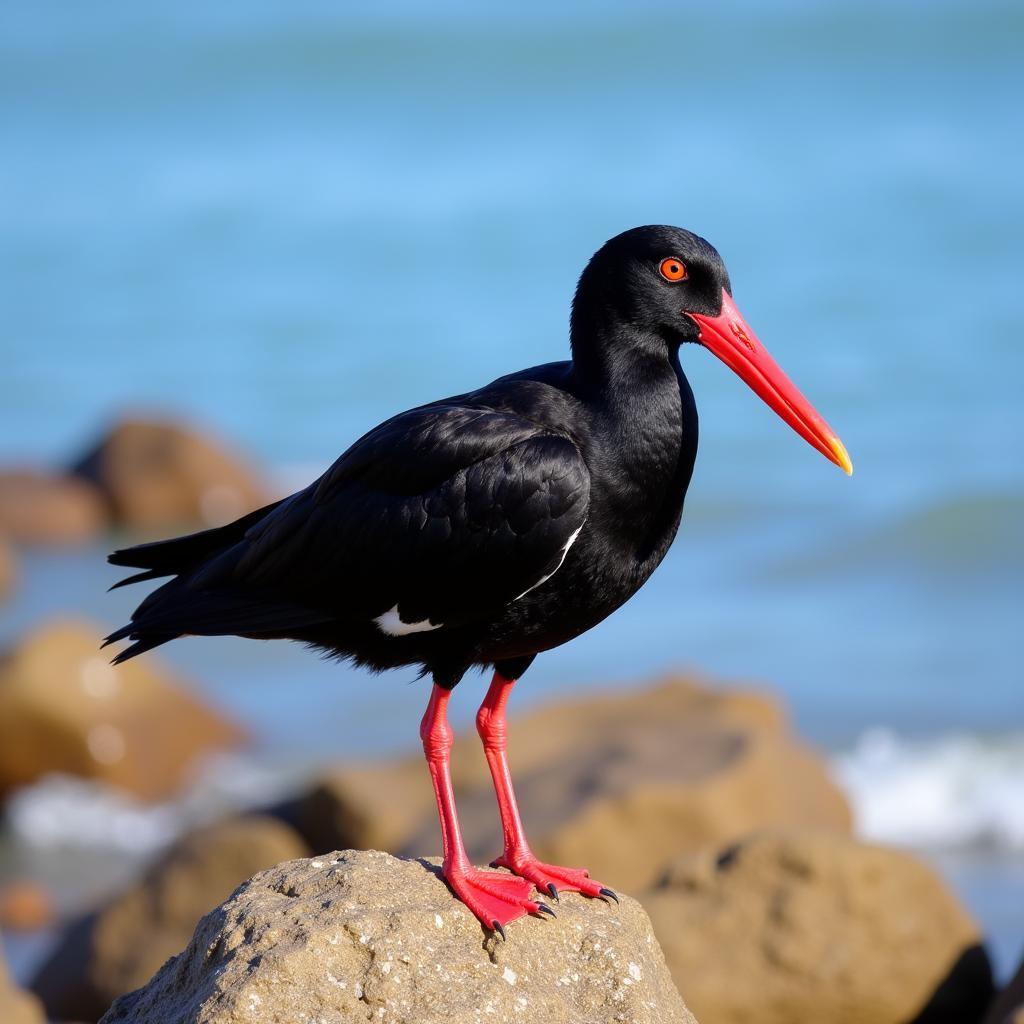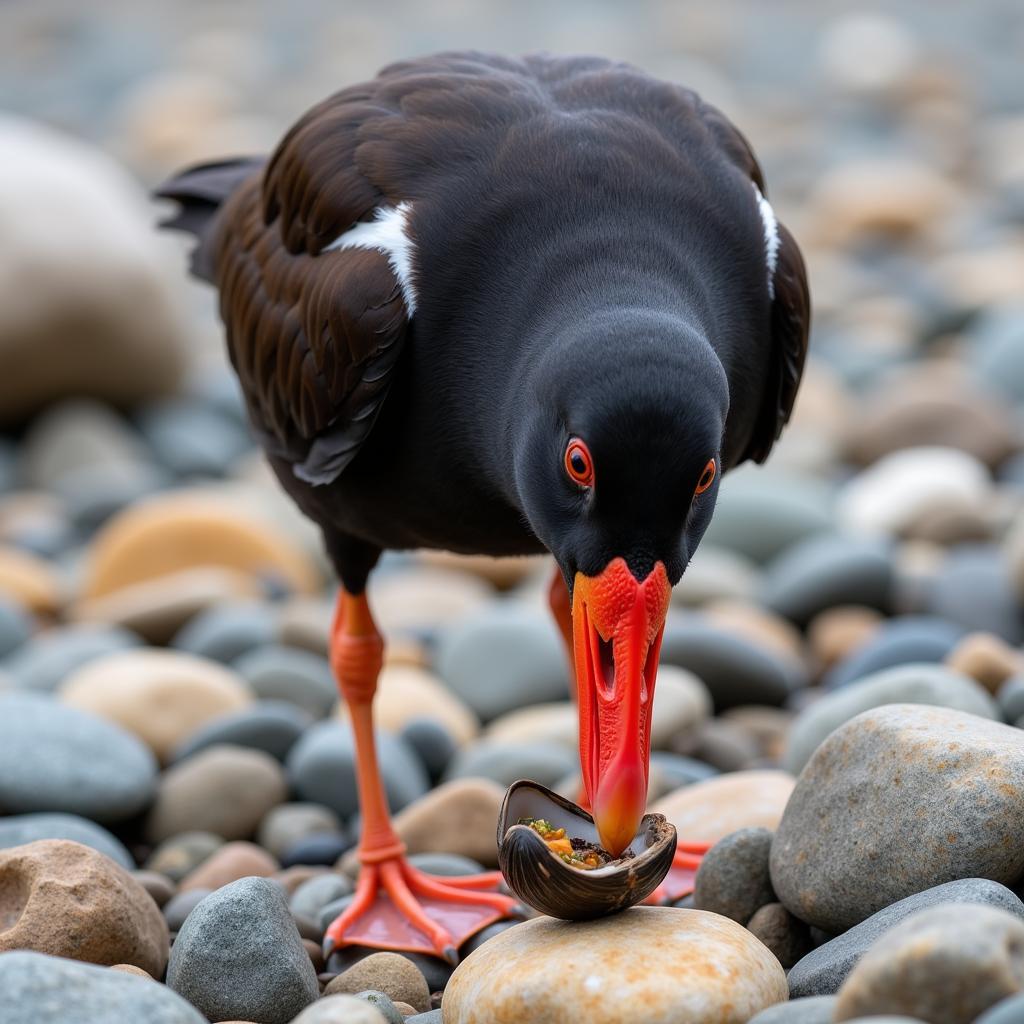African Black Oystercatcher: A Striking Shorebird of Africa’s Coastline
The African Black Oystercatcher, scientifically known as Haematopus moquini, is a captivating shorebird endemic to the southern coast of Africa. These striking birds, with their jet-black plumage and vibrant red beaks and legs, are a common sight along the rocky shores and sandy beaches of South Africa and Namibia.
 African black oystercatcher perched on a rock
African black oystercatcher perched on a rock
Appearance and Adaptations
True to their name, African black oystercatchers sport a sleek, all-black plumage. Their bright red eyes, long, orange-red beaks, and similarly colored legs provide a stark and beautiful contrast. This striking coloration is a key identifier, setting them apart from other oystercatcher species. These birds are sturdy and medium-sized, measuring around 42-50cm in length.
Their most distinctive feature, their robust, wedge-shaped beak, is a specialized tool perfectly adapted for their diet. The beak’s strong, flattened tip is used to pry open mussels, limpets, and other shellfish, their primary food source.
 African black oystercatcher feeding on a mussel
African black oystercatcher feeding on a mussel
Habitat and Distribution
African black oystercatchers are non-migratory birds, meaning they reside in their chosen territories year-round. Their distribution is confined to the coastlines of South Africa and Namibia, stretching from the Western Cape in South Africa to southern Angola. They prefer rocky shores, sandy beaches, and estuaries, where the tides offer a rich bounty of shellfish.
Behavior and Social Structure
These oystercatchers are highly territorial, particularly during the breeding season, fiercely defending their chosen nesting sites from rivals. They are often seen in pairs or small, scattered flocks along the shoreline, their loud, piping calls echoing across the waves.
Breeding and Nesting
African black oystercatchers are monogamous birds, forming strong pair bonds that often last for several breeding seasons. Breeding season varies depending on location, typically occurring between August and December. Unlike many bird species that construct elaborate nests, oystercatchers opt for a simpler approach. They create shallow scrapes in the sand or among rocks, camouflaging their nests with shells and pebbles.
Females usually lay two to three eggs, and both parents share the responsibility of incubation and chick-rearing. The chicks, covered in downy feathers that provide excellent camouflage against the sandy backdrop, are precocial. This means they can walk and feed themselves soon after hatching, although they remain dependent on their parents for protection and guidance.
 African black oystercatcher chicks on the beach
African black oystercatcher chicks on the beach
Conservation Status
The African black oystercatcher is currently listed as “Near Threatened” by the International Union for Conservation of Nature (IUCN). Their populations face threats from habitat loss due to coastal development, human disturbance, and predation by introduced species. Conservation efforts are focused on monitoring populations, protecting nesting sites, and mitigating human-induced threats to ensure the continued survival of this unique shorebird.


